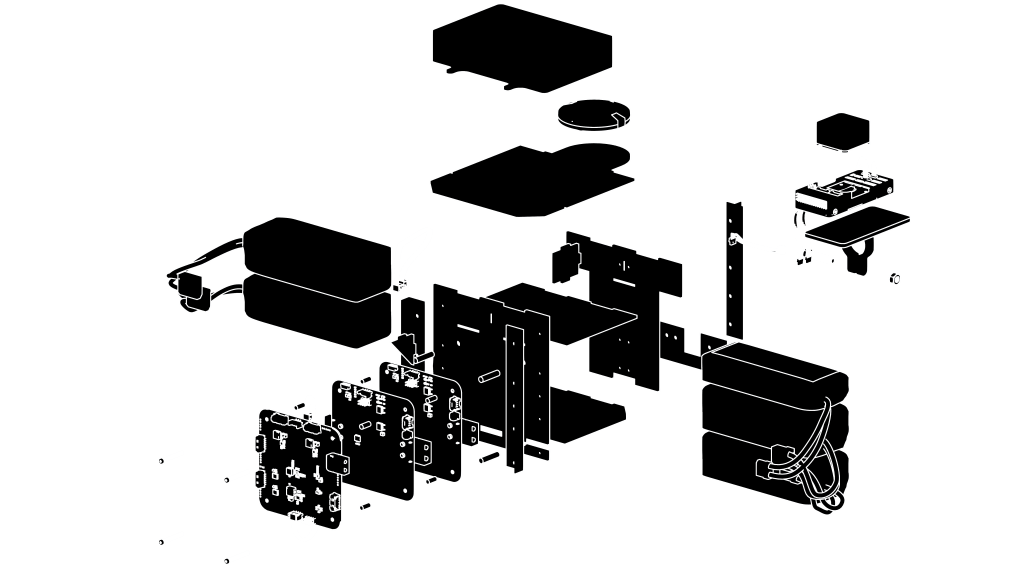THE COMPETITION
The New Flying Competition (NFC) is a prestigious international drone design and build competition for university students, held biennially in Hamburg, Germany. Since its launch in 2016, NFC has become a globally recognised event that challenges the brightest minds in engineering and robotics to develop the next generation of drone technology. With its rigorous standards and emphasis on innovation, the competition attracts top student teams from around the world, pushing the boundaries of autonomous flight and aerial systems.





Competition Goals
- To design and build an aircraft with the most efficient electric propulsion system possible
- Carry the heaviest possible payload in the largest possible volume during the competition
Competition Specifications
The competition outlines detailed specifications for each team subsection, requiring all participants to meet the qualification criteria. These standards are designed to assess a broad range of engineering competencies, from drone manufacturing and systems integration to flight operations and performance.

Aerostructures
The aircraft must withstand 3g flight manoeuvres without suffering a structural failure.
Calculational evidence must be provided showing the stability margin for the center of gravity range that is intended for the competition flights. Flights may only be conducted with a center of gravity that lies within the calculated range and provides a sufficient stability margin. These calculations may be performed using XFLR5, FLOW5, OpenVSP or based on wind tunnel measurements.
The wings, tailplane and fuselage have to be manufactured by each participating team.
Aircraft must be capable of carrying a payload with a mass of at least 1kg. The payload may be divided into 5 payload pieces (PLP). The PLP may have a cylindrical and cuboid shape. Other shapes are not permitted. All edges for the cuboid payload and all the diameters and edges for the cylindrical payload design must have a minimum length of at least 100mm. All PLP must be fully enclosed by the fuselage. The fuselage must be designed in such a way that the PLP can be removed. The PLP must be securely fixed during the flights. The PLP must be detachable in a reasonable amount of time and is not allowed to destroy the fuselage during the disassembly process. As an example, the payload is not allowed to be bonded to the fuselage preflight, only to be detached in a destructive process after landing.

Avionics

The aircraft must be able to accommodate a flight logger box with measurement electronics. This box does not require power from he aircraft and is self-contained. The position of the box must be on the top side of the aircraft. The box must be able to be bolted with standard M3 fasteners to the aircraft at the locations indicated. The box may only be enclosed (on the starboard and port side) and covered towards the sky using radio frequency permeable materials, i.e. wood, fibreglass, fabric, foil, plastic.
For optimal live telemetry reception, it is recommended to incorporate a 45 degree cut into the starboard and port sides of the mounting location.
The radio system and the receiver battery must be commercially available, unmodified “off-the-shelf” components. The radio system must be approved and certified for use in Germany.
An emergency function must be implemented and approved by the organising team in the event of a radio link failure. The emergency function must be described in the FDR and will be discussed during the safety check. If, during the contest, it is found that the emergency function is inadequate, the team will not be allowed to take part in any contest flights on that day.
Only 434 MHz, 868 MHz and 5.8 GHz may be used for the radio link, telemetry and possible FPV video connection.
Propulsion
The aircraft may not be lighter than air. Otherwise, all configurations are allowed. The entire propulsion system must be powered by a battery pack. No additional power supply (e.g. launch catapult, rocket booster) is allowed.
The propulsion of the aircraft must be electric. Any kind of combustion engine, whether as a direct drive or in a hybrid system, is not allowed. Fuel cell systems may be used, but their use must be approved in advance by the organizing team.
Only batteries with LiPo, LiIon, LiPo-HV or LiFePo cells are permitted as power source. The batteries must have an XT60, XT90 or AS150 connector for the main power and a standard JST-XH connector for balancing. The batteries must be removable from the aircraft and may consist of connected individual battery packs.
During the competition, each team is required to hold a secure container for safely storing the batteries when not in use. The individual battery packs must not exceed of 6S. The entire battery pack must not weigh more than 3kg. The battery for the drive must only supply power to the drivetrain and no other electrical components in the aircraft.
Accordingly, an additional battery (“receiver battery”) must be used to power the remaining electrical components such as the flight controller, servos, sensors, RC equipment and other actuators and peripherals.
The aircraft must take off completely under its own power, no assistance by touching the aircraft (e.g. keeping the wings straight during acceleration or even hand-launching) is allowed.
No part of the aircraft may remain on the ground during take-off, otherwise the flight will not be scored.
The take-off mass must not exceed 15 kg.

Flight Operations

A valid e-ID of the remote pilot must be attached to the aircraft in accordance with the EU regulation for unmanned aerial vehicles of the “Open” category.
An autopilot or other stabilization systems may be used.
If the flight is to be automated, the planned flight route must be approved by the organizing team before the flight. Autonomous flying is not permitted.

